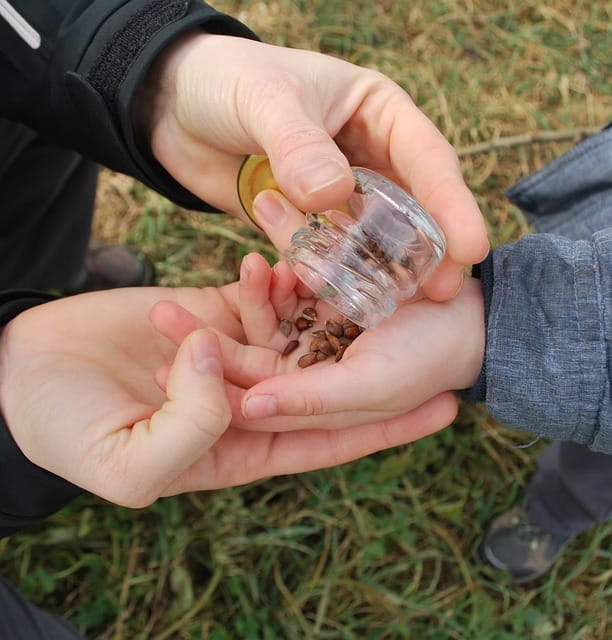Gardening philosophies: Permaculture
Permaculture is a gardening philosophy and design system that aims to create sustainable and self-sufficient ecosystems

In this article:
- Introduction: What is Permaculture?
- Origins and Principles of Permaculture
- Creating a Permaculture Design for Your Garden
- Implementing Sustainable Techniques in Permaculture Gardening
- Building Healthy Soils: Composting and Mulching in Permaculture
- Plant Selection and Guild Planting in Permaculture
- Water Conservation and Harvesting in Permaculture Gardening
- Attracting Beneficial Wildlife and Insects to Your Permaculture Garden
- Maintaining and Managing a Permaculture Garden
- Common Challenges in Permaculture Gardening and How to overcome them
- Examples of Successful Permaculture Gardens
- Conclusion: Embracing the Permaculture Philosophy in Your Own Garden
Introduction: What is Permaculture?
Permaculture is a gardening philosophy and design system that aims to create sustainable and self-sufficient ecosystems. It focuses on working with nature and mimicking natural patterns and processes to maximize productivity without harming the environment. In a permaculture garden, everything is interconnected, and the objective is to create a harmonious balance between humans, plants, animals, and the surrounding ecosystem.
Origins and Principles of Permaculture
Permaculture was first developed in the 1970s by Australians Bill Mollison and David Holmgren. They drew inspiration from indigenous land management practices, traditional farming systems, and ecological principles.
The main principles of permaculture include:
- Care for the Earth
- Care for People
- Setting Limits and Redistributing Surplus
- Collective Decision Making and Cooperation
- Using Diversity and Cooperation
- Integrating Rather than Segregating
- Observe and Interact
- Use Small and Slow Solutions
- Produce No Waste
- Apply Self-Regulation and Accept Feedback
Creating a Permaculture Design for Your Garden
Designing a permaculture garden involves careful planning and consideration of various factors such as climate, soil type, available space, and personal preferences. It is important to analyze the site, identify its strengths and weaknesses, and create a detailed plan that incorporates the principles of permaculture.
The design process involves mapping zones, sectors, and key elements, as well as considering the flow of energy, water, and nutrients in the garden.
Implementing Sustainable Techniques in Permaculture Gardening
Sustainability is a fundamental aspect of permaculture gardening. Various techniques can be employed to ensure long-term environmental health and productivity. These can include organic pest control methods, companion planting, crop rotation, and using natural materials for structures and pathways.
Building Healthy Soils: Composting and Mulching in Permaculture
Soil health is paramount in permaculture gardening. Composting and mulching are two essential practices that help build and maintain healthy soils. Compost provides valuable nutrients to plants, improves soil structure, and increases water retention. Mulching helps suppress weeds, conserve soil moisture, regulate soil temperature, and promote the growth of beneficial soil organisms.
Plant Selection and Guild Planting in Permaculture
In permaculture, the selection of plants is crucial. Emphasis is placed on choosing native and perennial plants that are well-adapted to the local climate and can support biodiversity. Guild planting, which involves planting compatible species together, helps create mutually beneficial relationships and enhances overall garden productivity.
Water Conservation and Harvesting in Permaculture Gardening
Water is a precious resource, and permaculture aims to minimize water usage while maximizing its effectiveness. Techniques such as rainwater harvesting, using swales and ponds to manage water runoff, and implementing efficient irrigation systems help conserve and effectively use water in the garden.
Attracting Beneficial Wildlife and Insects to Your Permaculture Garden
Encouraging beneficial wildlife and insects in a permaculture garden helps maintain a balanced ecosystem and provides natural pest control. Creating habitat features, such as birdhouses, bat boxes, and insect hotels, along with planting diverse native flowering plants, attracts a wide range of beneficial wildlife and insects.
Maintaining and Managing a Permaculture Garden
A well-maintained permaculture garden requires regular care and attention. Tasks may include pruning, weeding, mulching, composting, and troubleshooting any issues that arise. It is important to work in harmony with nature, ensuring the garden continues to thrive and evolve over time.
Common Challenges in Permaculture Gardening and How to overcome them
Permaculture gardening can present various challenges, including pest and disease management, unpredictable weather patterns, and maintaining soil fertility. However, these challenges can be overcome through integrated pest management strategies, crop diversity, regenerative farming practices, and adapting to changing conditions.
Examples of Successful Permaculture Gardens
Throughout the world, there are numerous examples of successful permaculture gardens that showcase the principles and techniques of this gardening philosophy. From small urban plots to large-scale farms, these gardens demonstrate the potential for sustainable and self-sufficient food production while regenerating the environment.
Conclusion: Embracing the Permaculture Philosophy in Your Own Garden
Permaculture gardening offers a holistic approach to creating sustainable and resilient gardens. By incorporating the principles and practices of permaculture, you can create a productive and beautiful garden while contributing to the health of the planet.
